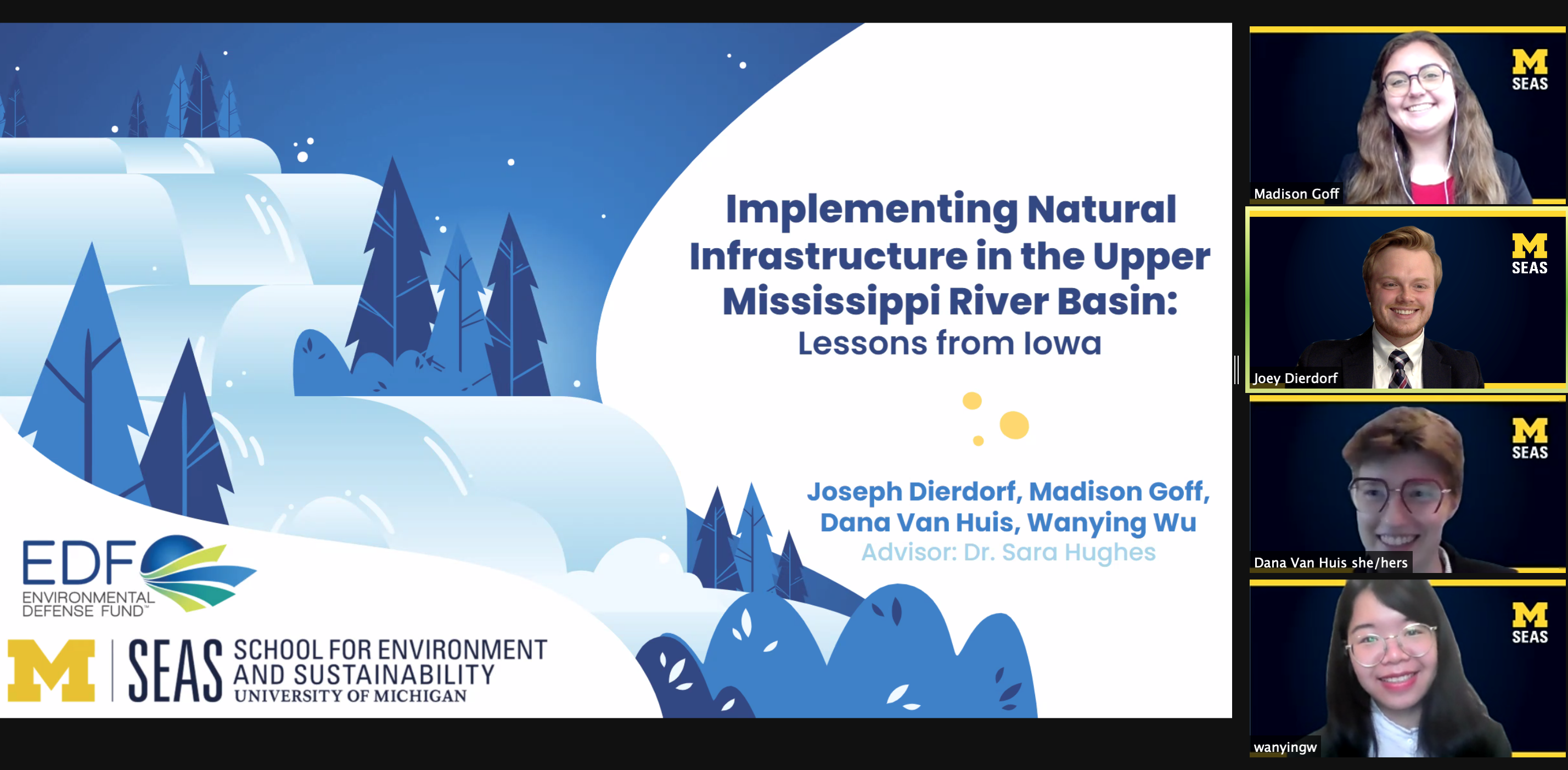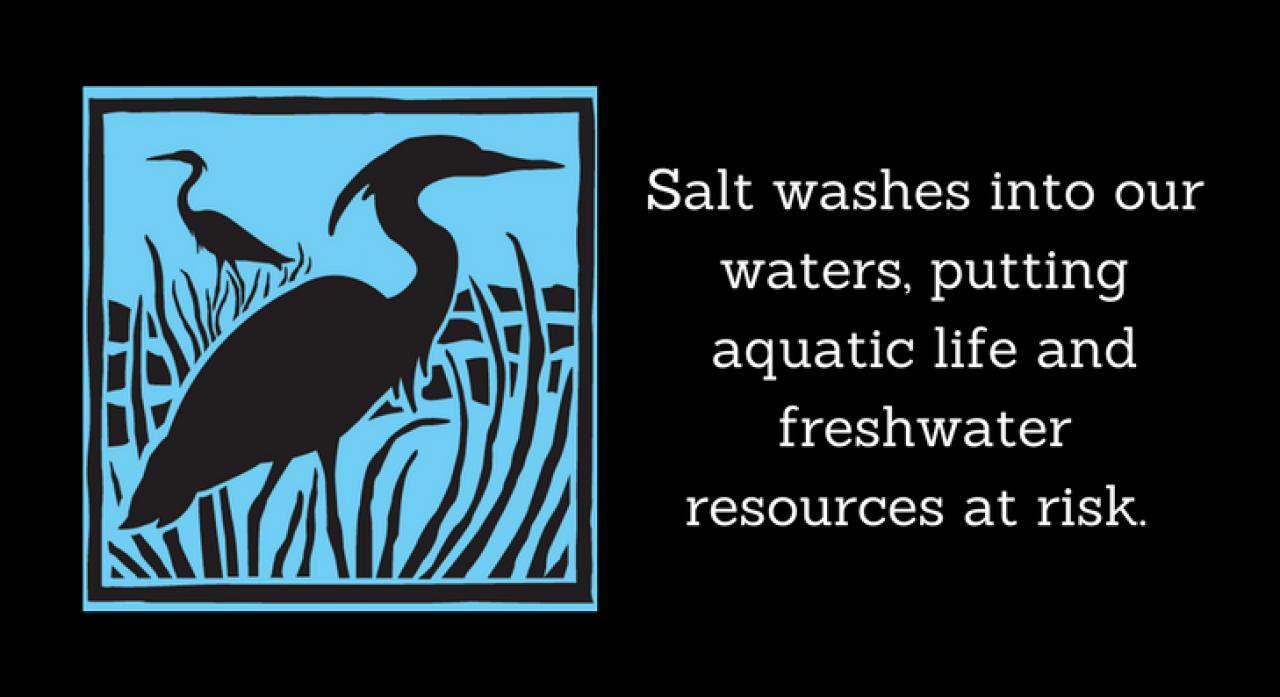SEAS Masters Group Projects
SEAS Masters group projects are an important part of the Water and Climate Policy Lab. Students complete projects in groups of three to five, with clients ranging from local governments to international organizations. Their results and products are highlighted below.
Environmental Defense Fund: Implementing Natural Infrastructure in the Upper Mississippi River Basin
The Upper Mississippi River Basin (UMRB) is home to approximately 30 million people. The basin has a drainage area of 189,000 square miles in Illinois, Iowa, Indiana, Minnesota, Missouri, and Wisconsin, and suffers from poor water quality due to high nutrient runoff from the over-application of fertilizers in industrial agriculture and the increasing frequency of flood (America’s Watershed Initiative, 2020).
A promising solution to address these issues is the use of natural infrastructure practices, such as restoring wetlands, that reduce both flood risk and nutrient pollution. Collaborative conservation is a demonstrated tool for implementing natural infrastructure practices. Collaborative conservation has the potential to engage diverse voices, needs, and challenges within a community. However, acts of conservation do not necessarily have an equal impact across communities and it is particularly critical that socially vulnerable communities are engaged in natural infrastructure projects and policies.
The central objectives of this project were to determine how natural infrastructure implementation can be improved and how natural infrastructure can most benefit socially vulnerable communities. The project focuses on Iowa with the potential for the recommendations and findings to be expanded to the entirety of the UMRB. To answer these questions, the project has five specific objectives (discussed below): (1) identify key locations for natural infrastructure interventions using physical features of landscapes, (2) evaluate the exposure of socially vulnerable communities to nitrogen pollution and flooding in Iowa, (3) understand the social and political conditions for successful natural infrastructure implementation in Iowa, (4) identify policy opportunities for expanding natural infrastructure in Iowa, and (5) propose priorities for future natural infrastructure research and advocacy.
Team Members:
Joseph Dierdorf, Madison Goff, Dana Van Huis, and Wanying Wu

Full Text of the Report
Michigan Department of Energy, Great Lakes, and Environment: Development of a Reasoned Approach to Chloride Reduction in Michigan
Chloride concentrations in America’s lakes have steadily risen over the past several decades as a result of anthropomorphic activity, including increased urbanization and its associated chloride runoff. Among those waters affected include the Great Lakes. This is a problem because chloride can have significant harmful effects on aquatic life and plants. Michigan, the “Great Lake” state, is thus a major contributing factor affecting chloride concentrations in the Great Lakes since almost all of its watersheds drain into them. Due to the harmful effects chloride has on aquatic life, Michigan’s Department of Environment, Great Lakes, and Energy (EGLE) has recently developed water quality values (WQV) for chloride. These standards were set to incentive chloride reduction for the sake of protecting aquatic life. EGLE’s challenge involves trying to develop a state-wide chloride budget and reduction plan in order to better understand chloride contributions by source (point and non-point sources) and scale in order to prioritize source reduction efforts. The objectives of this project were to assist EGLE in creating this state-wide chloride budget, as well as then determining sector-specific cost-effective treatments and/or solutions aimed at reducing chloride, ideally to levels that are in compliance with the WQV of the state.
The final report can be found here:
https://waterclimatepolicylab.org/wp-content/uploads/2022/06/SALT-Final-Report-4.19.22.pdf
Team Members:
Michael Harrington, Daniela Pitzzu, and Meghan Williamsen


